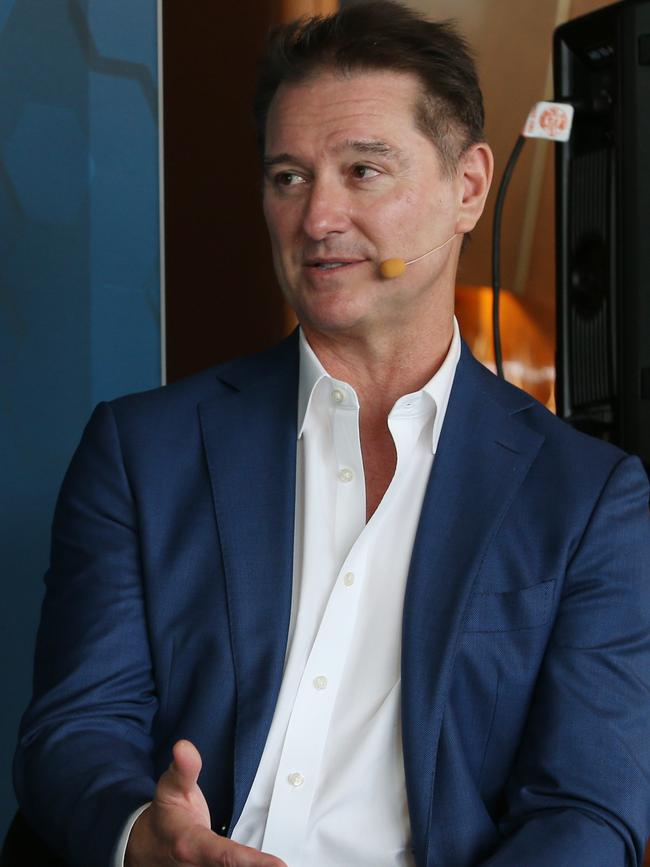The best-case scenario of a soft landing is looking more likely, but the risks endure
Inflation has been put back in its box and despite some gloom, business conditions continue to be at above-average levels.

Given the resilience in local and global economic growth over recent months, along with continued steady declines in inflation, it appears increasingly likely that a soft landing is possible this year.
If so, it would be a best-case scenario that seemed unlikely as recently as late last year.
In Australia, the December quarter consumer price index report revealed annual inflation had dropped to 4.1 per cent – notably less than the 4.5 per cent rate the Reserve Bank had expected as recently as November. Goods inflation is almost back to its usually low pre-pandemic levels and, while services inflation remains relatively high, it is also showing encouraging signs of moving lower also. My expectation is that underlying inflation will be back within the Reserve Bank’s 2-3 per cent target zone by the December quarter of this year.

At the same time, local business conditions remain at above average levels and the unemployment rate is still near generational lows at just under 4 per cent. While consumer spending remains under pressure, public and private investment is firm and higher immigration has placed a safety net under economic growth. Easing inflation should help boost real household incomes once again and make it less likely the RBA will keep its foot on the brake.
Although many feared a return to the persistent high inflation days of the 1970s, it turns out the post-Covid inflation we’ve experienced seems transitory after all. What we’ve seen is a series of one-off price level adjustments to clear markets suffering from short-term excess demand. This was first evident in the goods market during lockdowns, but spilt over into services and labour markets when economies reopened.
Higher interest rates and inflation have so far merely reduced this degree of excess demand, without unduly hurting actual economic activity. At the same time, supply capacity in both goods and labour markets has gradually recovered.
As would be expected, better-balanced markets are leading to a levelling off in pricing pressure. Importantly, with longer-term inflation expectations still contained, the much-feared entrenchment of high inflation through a self-defeating wage spiral so far has not materialised.
The good news for investors is that a soft landing – that is, modest economic growth yet still falling inflation – bodes well for both bond and equity markets this year. Slowing inflation should allow central banks to pivot towards cutting interest rates, which in turn should cause bond yields to fall further and boost defensive fixed income returns after a few years of poor returns.
Indeed, there’s a good chance the Reserve Bank could cut interest rates at least two to three times in the second half of this year, with the US Federal Reserve potentially cutting rates even more deeply.
Equity markets should also benefit, although global markets especially have already rallied in recent months on the back of the encouraging economic news. But equity market valuations in Australia and globally – outside of perhaps the US’s large cap technology stocks – appear far from expensive and should be supported by lower bond yields this year.
Australia’s S&P/ASX 200 index, for example, is trading at about 16 times 12-month forward expected earnings. And after a 5 per cent decline last financial year due largely to a major decline in energy revenues, corporate earnings are at this stage expected to bounce back at least 5 per cent this financial year and a further 5 per cent in 2024-25. While the financial and energy and resources sectors currently have relatively subdued earnings growth expectations, the outlook for other sectors is notably higher – especially the health and consumer discretionary sectors.
There’s a good chance of notable earnings upgrades as and when the RBA cuts interest rates and the economic outlook starts to improve. As a result, we could see the ASX 200 at 8000 points before Christmas, if not higher.
Of course, risks remain. It’s still possible that the lagged impact of past interest rate increases catches up with the economy, especially as more households and businesses are forced to refinance cheap Covid-era loans at higher rates.
But this may only mean central banks cut rates more quickly and deeply, limiting the economic downturn. Inflation has declined but is not yet back to levels the RBA would be happy with.
A more troublesome risk is if the decline in inflation starts to slow, with wages and service sector inflation remaining too high given labour markets are still tight. Again, this risk should be averted provided overall economic growth keeps easing for a time, with a gradual lift in the unemployment rates in countries such as Australia and the US to about 4.5 per cent – hopefully without triggering a deeper downturn. If excess demand for labour slows or labour supply continues to recover, it’s possible that wages and services sector inflation slows further without a significant rise in unemployment.
A final risk is geopolitical – an escalation in the tragic conflicts in the Middle East and Europe that pushes up inflation through disruption of critical global food and energy supplies. Chinese tensions with Taiwan also persist, and the potential re-election of Donald Trump as US president later this year would be a new wildcard.
So far at least, geopolitical tensions remain contained, and the consequences of an escalation could be so disruptive that major players such as the US, Europe and the Middle East will probably continue to try hard to avoid it. The rise in non-OPEC oil supplies, particularly in the US, also probably places a ceiling on oil prices over the coming year.
David Bassanese is the chief economist at Australian fund manager Betashares






To join the conversation, please log in. Don't have an account? Register
Join the conversation, you are commenting as Logout